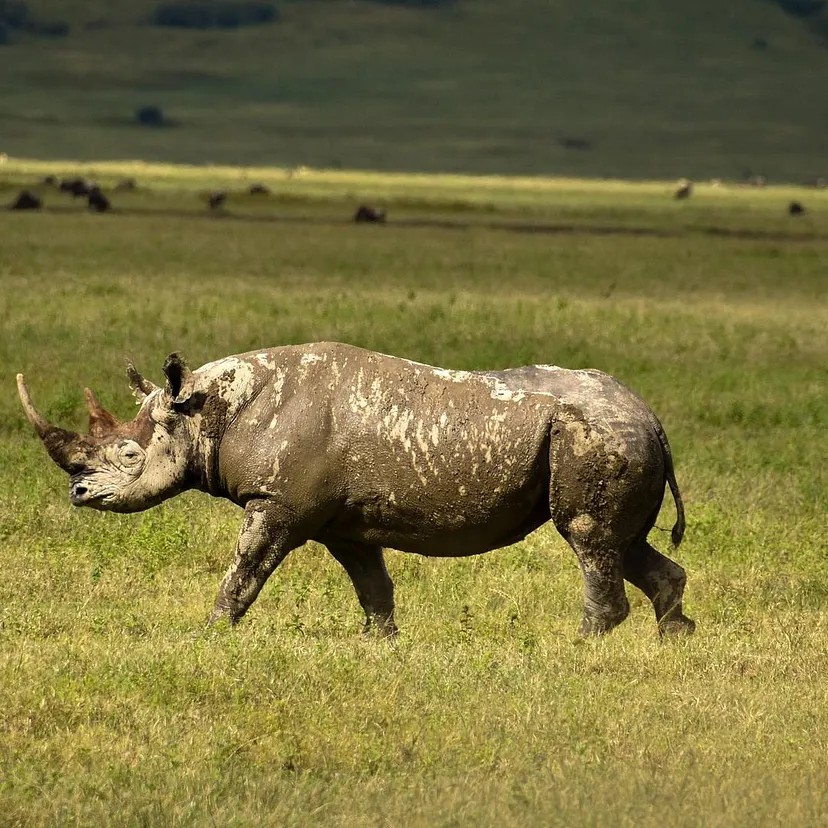Ngorongoro Conservation Area Experiences: Park Fees and Facts
Southeast of Serengeti National Park lies the Ngorongoro Conservation Reserve, a national conservation reserve in the Arusha region of northern Tanzania. It spans a portion of eastern Africa’s Great Rift Valley, covering an area of around 3,200 square miles (8,300 square kilometers). It is home to a range of ecosystems and landscapes, including grassland plains, savanna woodlands, forests, mountains, volcanic craters, lakes, rivers, and swamplands. The park’s most notable feature is the Ngorongoro Crater, one of the biggest intact calderas in the world. Major archaeological sites, Olduvai Gorge and Laetolil, are also situated there; in these places, human bones from 2.1 million and 3.6 million years ago, respectively, have been discovered.
The primary volcanic features in the region, including the Olmoti and Empakaai volcanoes and the Ngorongoro Crater, formed between 20 million and 2 million years ago. One of the main features of Empakaai Crater is the deep soda lake that fills about half of the caldera floor.
The world’s largest herds of ungulates, including Thomson’s and Grant’s gazelles, plains zebras, and gnu (wildebeests), reside in the Ngorongoro Conservation Area. Lions, leopards, cheetahs, and spotted hyenas are examples of predatory animals. There are also African hunting dogs and endangered black rhinoceroses. Among the more than 400 kinds of birds found in the region are the bronze and tacazze sunbirds, flamingos, splendid starlings, and silvery-cheeked hornbills.
The region was first included in the Serengeti National Park in 1951, but it was given its designation as the Ngorongoro Conservation Area in 1959. It was inscribed on the UNESCO World Heritage List in 1979. Approximately 25,000 to 40,000 Masai are authorized to graze their cattle in the area, even though cultivation is prohibited there. Concerns in the later half of the 20th century included the depletion of black rhinoceros, leopard, and elephant populations due to poaching, as well as harm to the ecology from overgrazing and tourist vehicles.

The Ngorongoro Crater
The massive caldera, known as the Ngorongoro Crater, is located in the centre of the Ngorongoro Conservation Area. It was created millions of years ago when a volcano collapsed. One of the six biggest craters in the world, the crater dips almost 600 meters at its lowest point. It is understandable why the Ngorongoro Crater is one of the most well-known natural wonders in the nation, given its imposing size and enthralling past.
The conservation area that contains the crater was proclaimed a UNESCO World Heritage Site in 1979 and is worldwide famous for its distinctive residents. The native fauna of the area coexists peacefully with the Masai tribespeople inside the park.
The area is frequently visited by lions, elephants, gazelles, flamingos, wildebeests, and cheetahs. Within the crater’s protective rim, the critically endangered black rhino also makes its home.
Every day, 4x4s packed with adventurers head into the crater’s depths in quest of some of the planet’s most exquisite animals for game drives. There are few options for travellers to get out of their cars so that the environment can remain as unspoiled and conserved as possible. Nonetheless, there are a few places for picnics where guests can fully enjoy themselves. Walking, trekking, and engaging with the locals are more feasible in the park’s broader vicinity outside the crater.
Tours of Ngorongoro Crater
These are a few well-liked travel plans that stop in the Ngorongoro Crater. Alternatively, have a look at our area dedicated to custom holiday planning if you would like to incorporate a trip to the Ngorongoro Crater into a unique tour schedule for Tanzania.
Affordable | Budget Ngorongoro Conservation Area Safari Packages

8 Day Ngorongoro Manyara Safari and Zanzibar
Lake Manyara National Park | Serengeti National Park
Wildlife, Nature Hikes, Game Drives and Beach holidays
Duration: 8 Days | 7 Nights
 5 Day Tanzania Safari Package
5 Day Tanzania Safari Package
Ngorongoro Conservation Area |Tarangire National Park
Wildlife, Scenic Views, Picnics and Game Drives
Duration: 5 Days | 4 Nights

